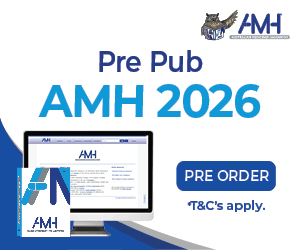Access to essential healthcare is increasingly challenging, especially in rural and remote areas where GP shortages are leaving communities without vital medical services.
By removing outdated restrictions and regulatory barriers that prevent nurses, midwives, and other healthcare professionals from working to their full scope of practice, could bridge critical gaps in care. This shift along with the introduction of expanded models of care could ease pressure on overstretched health services and improve patient access. It’s time to rethink how we deliver care.
THE BENEFITS OF WORKING TO FULL SCOPE OF PRACTICE
Research both within Australia and globally has shown that when nurses and midwives are able to fully use their skills, healthcare delivery becomes more efficient, and health outcomes improve.
The Australian Nursing and Midwifery Federation (ANMF) wholeheartedly supports this approach.
ANMF Federal Secretary Annie Butler has been vocal about the importance of nurses and midwives working to their full scope of practice. She emphasises that doing so was essential to meet the healthcare needs of many Australians, especially those who are marginalised or live in rural and remote areas, where access to care can be even more limited.
“We know that when nurses work to their full scope of practice in rural and remote disciplinary health services, multidisciplinary health services, community health services that target high risk vulnerable groups and multidisciplinary general practice models, people do better,” Ms Butler said at Parliament House in front of politicians and peers late last year.
Benefits include improved patient experiences, better health outcomes, reduced costs, enhanced clinician wellbeing, and advanced health equity, she said.

“We’ve measured the impact of nurses and midwives working to their full scope on cancer care, mental health, chronic disease management, birth outcomes, and reducing interventions—all of which contribute to keeping people healthier.
“All this points to a significant opportunity for the health of Australians if nurses and midwives are fully utilised and supported to work to their full scope of practice,” she said.
However, Ms Butler stated that for these improvements to happen, barriers to care need to be removed.
Research has identified key barriers to nurses and midwives working to their full scope and expanding models of care, including difficulties in raising awareness and gaining acceptance within implementation settings, and a lack of resources to establish and sustain these roles. Limited support from other health professionals further complicates adoption, often due to misconceptions about nurses’ scope of practice and concerns about costs. Additionally, integrating nurse-led care models with external services and referral pathways remain a significant challenge, requiring improved coordination and investment.1
WHAT IS SCOPE OF PRACTICE?
“Scope of practice refers to the boundaries of a profession, established through professional standards, codes, and guidelines that ensure safe and competent practice,” Dr Jane Douglas, ANMF Strategic Lead, Workforce and registered nurse explained.
“For nurses and midwives, the Nursing and Midwifery Board of Australia (NMBA) sets these standards, outlining that the foundational education of registered nurses, enrolled nurses, midwives, and nurse practitioners in Australia encompasses the full breadth of the profession’s scope at the graduate entry level.”
An individual’s scope of practice depends on education, authorisation, competence, and confidence in performing their role. However, it can vary based on the work setting, the health needs of the community, experience level, and employer policies.
Despite comprising 54% of the health workforce, many nurses, nurse practitioners, and midwives are not supported to work to their full potential. One-third of those in primary healthcare rarely practice to their full scope.
Dr Douglas warned that restrictive work practices, which prevent some nurses from working to their full scope could lead to reduced job satisfaction, missed opportunities to enhance primary healthcare access and improve health outcomes. Unlocking potential: Rethinking how we deliver care

Access to essential healthcare is increasingly challenging, especially in rural and remote areas where GP shortages are leaving communities without vital medical services. By removing outdated restrictions and regulatory barriers that prevent nurses, midwives, and other healthcare professionals from working to their full scope of practice, could bridge critical gaps in care. This shift along with the introduction of expanded models of care could ease pressure on overstretched health services and improve patient access. It’s time to rethink how we deliver care. Kathryn Anderson and Natalie Dragon report.
EXPANDING MODELS OF CARE
A key factor in successfully expanding scope of practice is how these roles fit within existing and evolving models of care. Modern models of care emphasise team-based, patient-centred approaches where nurses and midwives can take on expanded roles in primary care, chronic disease management, aged care, and maternity services.
Already, nurses across Australia are working in nurse-led care models, including:
- Emergency department triage and pre-admission clinics
- Diabetes education and chronic disease management
- Stomal therapy and breast cancer nursing
- General walk-in clinics and telehealth services
THE SCOPE OF PRACTICE REVIEW: A STEP TOWARDS CHANGE
Recognising the pressure on the healthcare system, the Australian Government launched the Scope of Practice Review late last year.
The review aimed to address the underutilisation of nurses, midwives, and allied health professionals due to outdated regulations and restrictions, while ensuring patient safety remains a priority.
The review involved extensive consultation with healthcare professionals, unions, regulatory bodies, and medical groups. It examined how regulations could be updated to allow nurses and midwives to take on greater responsibilities, such as prescribing medications and leading nurse-led clinics, ultimately improving healthcare accessibility across Australia.
Speaking about the review at Parliament House, Assistant Minister for Health and Aged Care Ged Kearney said nurses and midwives were not only not working to their full scope of practice but there were inconsistencies in scope across states and territories that created additional barriers to care.
“Healthcare activities supported in one state may be blocked or restricted in another. Removing unnecessary barriers will make it easier for Australians to access high-quality care.”
The government is now considering the 18 recommendations from the review, which focus on modernising healthcare policy and regulatory frameworks to support an expanded scope of practice.
BREAKING DOWN BARRIERS
The federal government has already begun taking steps to remove barriers and expand the role of nurses and midwives that will help strengthen the healthcare workforce, improve patient access to timely care, and reduce the strain on general practitioners and emergency departments.
A key reform has been the removal of collaborative arrangements, which previously required nurse practitioners (NPs) and endorsed midwives to secure formal agreements to access Medicare and Pharmaceutical Benefits Scheme (PBS) services. This requirement often created unnecessary administrative barriers, limiting access to care – particularly in rural and remote areas facing persistent medical practitioner shortages.
Now, NPs and endorsed midwives can provide Medicare-funded services and prescribe PBS medications in line with their skills and experience, without these restrictions.
In addition, the government has announced that appropriately educated registered nurses (RNs) will soon be able to prescribe certain medications under a prescribing agreement with an authorised health practitioner. This new endorsement, registration standard, and guidelines are set to take effect mid-2025.
To qualify, RNs must have sufficient clinical experience, complete a postgraduate qualification, and undergo a six-month clinical mentorship with an authorised health practitioner following endorsement.
KEEPING THE MOMENTUM
Despite strong support, some medical groups remain cautious about expanding the roles of nurses and midwives. Overcoming misconceptions and refining policy frameworks will be crucial to successfully implementing reforms that strengthen Australia’s primary healthcare system.
The ANMF, alongside eight leading nursing and midwifery organisations, is at the forefront of this effort. They are actively working with the government to ensure these changes move beyond proposals and become fully realised, delivering tangible improvements in healthcare access and patient outcomes.

With the federal government reviewing recommendations from the Scope of Practice Review, there is momentum for further reform. Strengthening workforce policies, standardising regulations across states, and investing in nurse-led models of care will be key to ensuring that all Australians receive timely, high-quality healthcare. The challenge now is for policymakers, healthcare organisations, and professional bodies to work together to unlock the full potential of nursing and midwifery in shaping a stronger, more accessible healthcare system for the future.
Reference
1 Beks H., Clayden s., Wong Shee A., Binder M.J., O’Keeffe S., Versace V. Evaluated Nurse- led models of care implemented in regional, rural, and remote Australia: A scoping review, Collegian 30 (2023) 769-788








